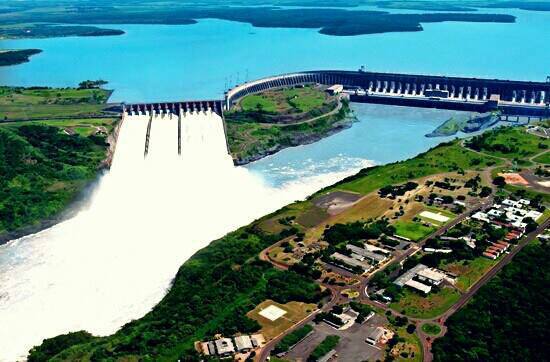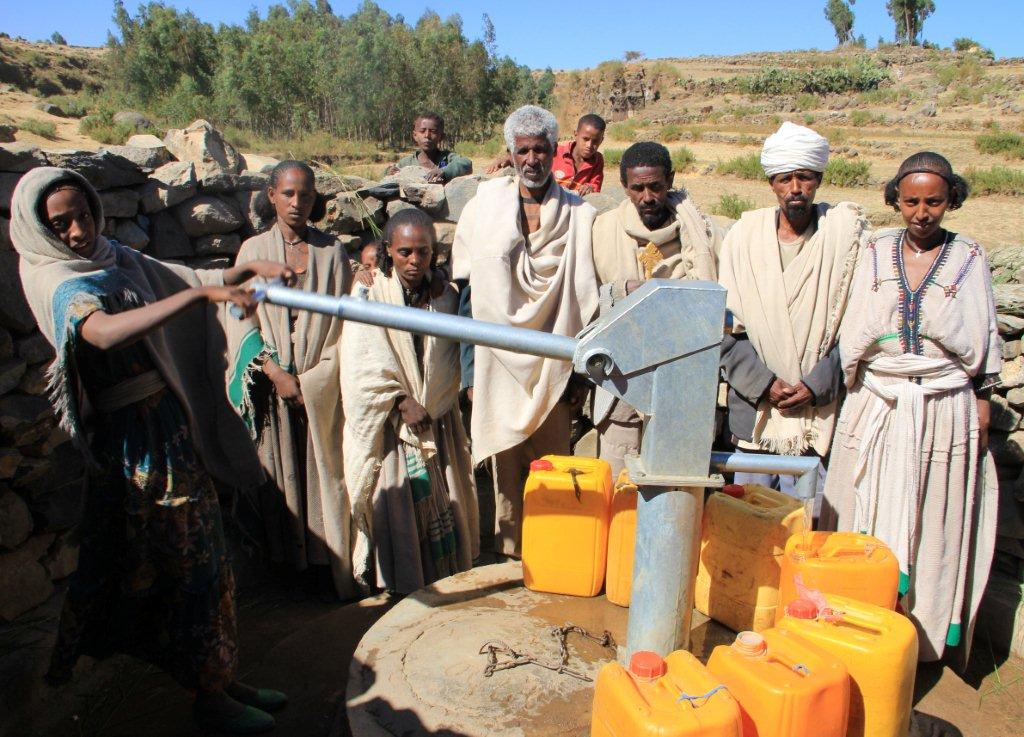This entry is the second of several from Jim Goering, who, with his wife Shirley, joined Water to Thrive in Ethiopia in June. In two multi-year postings in Ethiopia with first Harvard University and then as an official of the World Bank, Goering, an economist, gained extensive experience in the country and brings this perspective to bear on Ethiopia’s economic and social situation as well as on the work of Water to Thrive. This entry, examining the country’s water crisis, was preceded by an overview of Ethiopia’s economic position and will be followed by a recap of the June trip and recommendations for the ongoing work of Water to Thrive.
To understand Ethiopia’s water resource development program, it is useful to distinguish ambitious hydropower projects on its major rivers (the Nile in the north, flowing into Sudan and Egypt, and the Omo in the south, flowing into Kenya’s Lake Turkana) from much less-known government efforts to meet domestic water needs from local sources, principally groundwater.
Although our Water to Thrive visit focused on village water development, some understanding of the expensive hydropower program is helpful, as it constitutes an important potential drain of the government’s scarce financial resources that might otherwise be available to better meet domestic water needs. As Wikipedia sources note, Ethiopia considers itself the “powerhouse of Africa” due to its high hydropower potential. With less than 20 percent of Ethiopians having access to electricity, there is great need for the additional power that these big dams are, or will be, producing. Irrigation development, focusing on intensive agricultural production, is also planned for some dams. The government’s 25-year Master Plan outlines a very ambitious future dam construction program.
Large dams offer much needed benefits related to electricity production, foreign exchange earnings, flood control, and irrigation development, and clearly should be part of Ethiopia’s national development efforts. However, as worldwide experience illustrates, big dam construction is a complex undertaking, with both positive and negative effects. Potential negative impacts may include damage to the environment, displacement of existing populations in the reservoir areas, human rights issues and, in the case of dams on transnational rivers, political tensions with riparian neighbors. Where construction contracts are let without competitive bidding, there are also risks of corruption and inefficient use of financial resources.

The Grand Ethiopian Renaissance Dam, under construction as the largest dam in Africa, scheduled for completion in 2018, and located on the Blue Nile about 20 miles from the Sudanese border in northwest Ethiopia, may illustrate some of this complexity. Its total cost has been conservatively estimated at US $5.4 billion (Euro 4.8 billion). It will displace an estimated 20,000 people. And its construction contracts were awarded without competitive bidding to an Italian company which has been involved with construction with three other dams in Ethiopia, also under no-bid arrangements. The failure to employ a competitive bidding process has deterred financing from international sources, with the Ethiopian banking system now selling bonds to provide needed finance.
In contrast to the local and international publicity accorded Ethiopia’s hydropower program, much less seems to be known of laudable efforts by the government and several local and international non-governmental organizations to augment supplies of pure, easily accessible water for domestic consumption. These needs are pressing, and benefits to the public from such programs are substantial and incontrovertible.

Arguably, a hypothetical US$1 million spent in Ethiopia in a well-conceived, carefully implemented village water program would contribute more to the well-being of underserved populations than a similar amount in a large dam project. At an initial briefing in Addis Ababa, we were told that about 75 percent of Ethiopia’s rural population has “reasonable access” to safe water. This stretches credulity, and in fact, even a more likely estimate provided later of about 42 percent has been questioned by those who work in this sector.
This entry is the second of several from Jim Goering, who, with his wife Shirley, joined Water to Thrive in Ethiopia in June. In two multi-year postings in Ethiopia with first Harvard University and then as an official of the World Bank, Goering, an economist, gained extensive experience in the country and brings this perspective to bear on Ethiopia’s economic and social situation as well as on the work of Water to Thrive. This entry, examining the country’s water crisis, was preceded by an overview of Ethiopia’s economic position and will be followed by a recap of the June trip and recommendations for the ongoing work of Water to Thrive.
To understand Ethiopia’s water resource development program, it is useful to distinguish ambitious hydropower projects on its major rivers (the Nile in the north, flowing into Sudan and Egypt, and the Omo in the south, flowing into Kenya’s Lake Turkana) from much less-known government efforts to meet domestic water needs from local sources, principally groundwater.
Although our Water to Thrive visit focused on village water development, some understanding of the expensive hydropower program is helpful, as it constitutes an important potential drain of the government’s scarce financial resources that might otherwise be available to better meet domestic water needs. As Wikipedia sources note, Ethiopia considers itself the “powerhouse of Africa” due to its high hydropower potential. With less than 20 percent of Ethiopians having access to electricity, there is great need for the additional power that these big dams are, or will be, producing. Irrigation development, focusing on intensive agricultural production, is also planned for some dams. The government’s 25-year Master Plan outlines a very ambitious future dam construction program.
Large dams offer much needed benefits related to electricity production, foreign exchange earnings, flood control, and irrigation development, and clearly should be part of Ethiopia’s national development efforts. However, as worldwide experience illustrates, big dam construction is a complex undertaking, with both positive and negative effects. Potential negative impacts may include damage to the environment, displacement of existing populations in the reservoir areas, human rights issues and, in the case of dams on transnational rivers, political tensions with riparian neighbors. Where construction contracts are let without competitive bidding, there are also risks of corruption and inefficient use of financial resources.

The Grand Ethiopian Renaissance Dam, under construction as the largest dam in Africa, scheduled for completion in 2018, and located on the Blue Nile about 20 miles from the Sudanese border in northwest Ethiopia, may illustrate some of this complexity. Its total cost has been conservatively estimated at US $5.4 billion (Euro 4.8 billion). It will displace an estimated 20,000 people. And its construction contracts were awarded without competitive bidding to an Italian company which has been involved with construction with three other dams in Ethiopia, also under no-bid arrangements. The failure to employ a competitive bidding process has deterred financing from international sources, with the Ethiopian banking system now selling bonds to provide needed finance.
In contrast to the local and international publicity accorded Ethiopia’s hydropower program, much less seems to be known of laudable efforts by the government and several local and international non-governmental organizations to augment supplies of pure, easily accessible water for domestic consumption. These needs are pressing, and benefits to the public from such programs are substantial and incontrovertible.

Arguably, a hypothetical US$1 million spent in Ethiopia in a well-conceived, carefully implemented village water program would contribute more to the well-being of underserved populations than a similar amount in a large dam project. At an initial briefing in Addis Ababa, we were told that about 75 percent of Ethiopia’s rural population has “reasonable access” to safe water. This stretches credulity, and in fact, even a more likely estimate provided later of about 42 percent has been questioned by those who work in this sector.

About The Author: Water to Thrive
More posts by Water to Thrive